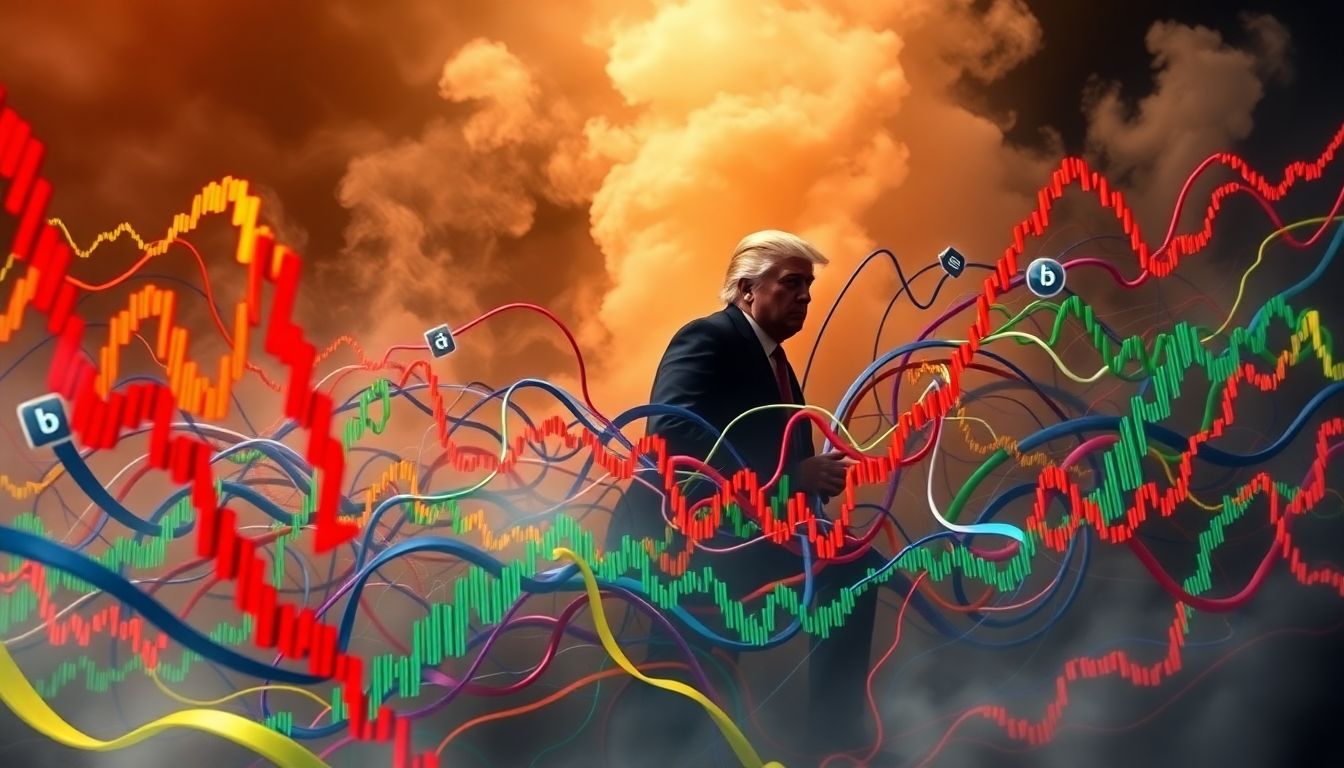
How Trump's Tariffs Triggered a Rollercoaster: Impact on Stock Markets in India and Globally
The global economy is a finely tuned machine, sensitive to every major policy shift from economic giants like the United States. In 2025, even years after former U.S. President Donald Trump's first set of aggressive tariffs, the world still feels the ripple effects. Trump's tariff policies, once dismissed by critics as short-term political theater, have triggered real and lasting disruptions — especially in stock markets across the globe, including India.
Let’s explore how Trump's tariffs unleashed a financial rollercoaster, how India responded, and why the world is still grappling with the consequences.
Understanding Trump's Tariff Strategy
Donald Trump's economic philosophy revolved around the idea of "America First." His administration imposed heavy tariffs on imports from China, Europe, and even friendly countries like Canada and India, aiming to protect American industries, especially steel, aluminum, and manufacturing.
At the heart of this strategy was a belief that tariffs would:
-
Reduce the U.S. trade deficit
-
Encourage domestic production
-
Punish countries seen as engaging in "unfair trade practices"
However, what unfolded was far more complex. While some U.S. industries saw short-term gains, the tariffs ignited a chain reaction across international markets.
The Immediate Global Shockwaves
When Trump’s tariffs first hit in 2018–2020, global markets reacted sharply:
-
Volatility Spiked: Uncertainty gripped investors, leading to sharp market swings in the U.S., Europe, and Asia.
-
Supply Chains Disrupted: Multinational companies faced higher costs, forcing many to rethink their manufacturing and sourcing strategies.
-
Trade Wars Escalated: Targeted countries, including China, retaliated with their own tariffs, deepening global tensions.
Fast forward to 2025, and the aftershocks of those initial blows are still being felt, particularly in emerging markets like India.
India's Market Response: Resilience Amidst Turmoil
India found itself in a delicate position. Although not the primary target of Trump's tariffs, India's economy, heavily reliant on exports and integrated into global supply chains, suffered collateral damage.
1. Stock Market Volatility
The Indian stock markets experienced sharp fluctuations during the peak of the U.S.-China trade war. Sectors particularly affected included:
-
Information Technology (IT): Indian tech firms serving U.S. clients faced uncertainty.
-
Pharmaceuticals: U.S. tariffs on Chinese goods benefited some Indian drugmakers, but overall sentiment remained jittery.
-
Auto Industry: Global supply chain disruptions impacted auto part exports and imports.
Foreign Institutional Investors (FIIs) turned cautious, leading to massive outflows and temporary depreciation of the Indian Rupee.
2. Strategic Realignment
India's policymakers recognized an opportunity amid the chaos:
-
Diversifying Export Markets: Efforts intensified to sign new trade agreements with European, Southeast Asian, and Middle Eastern nations.
-
'Make in India' Push: The government redoubled efforts to boost domestic manufacturing, trying to attract companies relocating from China.
-
Bilateral Trade Deals with the U.S.: India negotiated more favorable terms on key goods, avoiding the full brunt of American tariffs.
3. Boost from 'China Plus One' Strategy
As U.S. companies sought to reduce dependency on China, India emerged as a prime alternative manufacturing hub. Sectors like electronics, textiles, and pharmaceuticals saw new investment flows, partially offsetting the negative tariff impacts.
Global Market Fallout: Lessons Still Being Learned
Across the globe, Trump's tariffs left a mixed legacy:
-
Shift to Regional Trade Blocs: Countries realized the risks of over-reliance on a single trading partner. Agreements like the Regional Comprehensive Economic Partnership (RCEP) gained momentum.
-
Rise of Protectionism: Other nations adopted "local-first" economic policies, fearing vulnerability to sudden tariff impositions.
-
Reimagined Supply Chains: Businesses moved toward more localized and diversified supply networks.
Ironically, while Trump's tariffs aimed to help American workers, many economists argue they fueled global inflation, hurt U.S. consumers with higher prices, and strained international relations.
The Indian Economy in 2025: Stronger or Still Vulnerable?
Today, India's markets display remarkable resilience. Nifty and Sensex have hit record highs in 2025, driven by:
-
Domestic consumption boom
-
Startup innovation in technology and fintech
-
Government reforms focusing on ease of doing business
However, vulnerabilities remain. Global uncertainties — whether due to lingering U.S.-China tensions, energy crises, or new tariff wars — continue to influence India's economic trajectory.
The lesson? In a globalized world, no country is truly insulated from protectionist shocks.
Investor Sentiment: What Has Changed?
One significant long-term impact of Trump's tariff era has been a shift in how investors view global risk:
-
Increased Hedging: Investors now aggressively hedge against geopolitical risk, leading to higher demand for gold, oil, and defensive assets.
-
Greater Emphasis on Domestic Demand: Stocks tied to local consumption rather than exports are now preferred in emerging markets.
-
Due Diligence on Policy Risks: Investment decisions now heavily factor in not just economic indicators, but also political signals, including trade policies.
For Indian investors, Trump's tariffs served as a wake-up call: global events can — and will — shake domestic portfolios.
Conclusion: A World Permanently Altered
While Donald Trump may no longer be in office, his tariff policies have left an indelible mark on the global economy. For India and other emerging markets, the challenge is clear — adapt, diversify, and build economic models resilient to the whims of major powers.
The stock market turmoil triggered by tariffs taught nations a crucial lesson: the need to fortify their economies from unpredictable global shocks. For India, the response has been a blend of pragmatism, opportunity-seeking, and long-term strategic planning.
As we move deeper into 2025, the world continues to live with the consequences of a trade war that reshaped the very idea of globalization.
Comments
Post a Comment